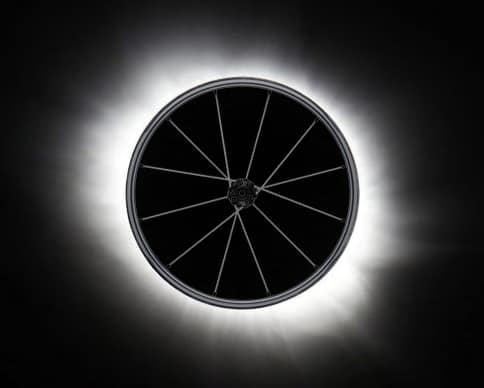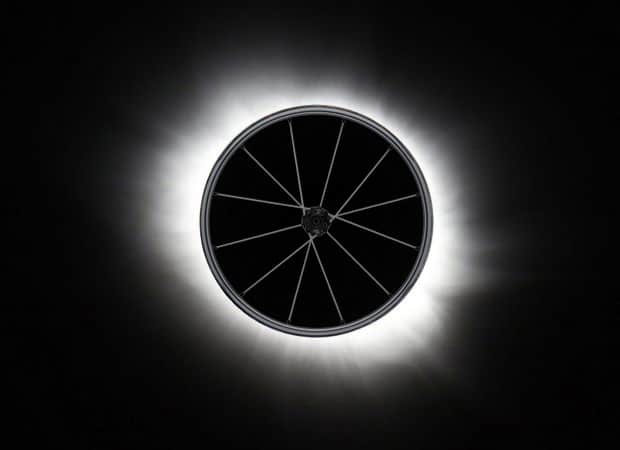
By now all the hoopla about the total solar eclipse is over and you are ready to hear the truth of what really happened that day.
My wife and I drove east through the Columbia Gorge at 3 a.m. to get to Biggs, Oregon, a tiny community of 50 people on a vast stretch of desert. We looked to the mountains 70 miles to the west. About 2,000 people were already waiting with us among a sea of vehicles. As the moon completely covered the face of the sun, a massive black shadow raced across the desert at 2400 mph and engulfed us in total blackness for a little more than two minutes. Who could ever forget that day: February 26, 1979.
That’s right, 1979. That’s when the real total eclipse happened. The one that was expected to occur on August 21, 2017, never actually happened. Maybe it was because I slept through it, or maybe it was because 38 years had passed since the real eclipse had happened and my attention span had shrunk to a few seconds in the interim. Maybe I just missed it.
 The 2017 eclipse was a product of the internet, a virtual event, unreal. But the one in 1979 was undeniably real. When blackness arrived in Biggs, it covered everyone, including me, the only person in a wheelchair. I was often the only person in a wheelchair wherever I went in 1979. It was a different world then. There were no personal computers, no buses with lifts, no accessible bathrooms, no smart phones, no Twitter and no legalized pot. A McDonald’s burger cost 43 cents, gas had just skyrocketed from 65 cents/gallon to 88 cents/gallon and ADAPT was four years from mounting its national campaign to make public transportation accessible. When the path of totality cast its blackness over the desert for a couple of minutes, everyone was invisible and inconsequential, not just me.
The 2017 eclipse was a product of the internet, a virtual event, unreal. But the one in 1979 was undeniably real. When blackness arrived in Biggs, it covered everyone, including me, the only person in a wheelchair. I was often the only person in a wheelchair wherever I went in 1979. It was a different world then. There were no personal computers, no buses with lifts, no accessible bathrooms, no smart phones, no Twitter and no legalized pot. A McDonald’s burger cost 43 cents, gas had just skyrocketed from 65 cents/gallon to 88 cents/gallon and ADAPT was four years from mounting its national campaign to make public transportation accessible. When the path of totality cast its blackness over the desert for a couple of minutes, everyone was invisible and inconsequential, not just me.
It felt good being on equal footing with the rest of society for those two minutes. For a moment in time, the sun’s corona held sway over every soul, and life itself was reduced to its bare essentials: sun, moon, earth. No need to fight for the right to keep healthcare in place. No worrying about global warming, rampant racism or nuclear war. No one trying to take away our civil rights or convince us we would be better off dead.
In the darkness, though, a light was just beginning to shine. We first saw glimpses of it two years prior to Biggs when hundreds of courageous people with all kinds of disabilities gathered in San Francisco to occupy the Health, Education and Welfare federal building — to protest the government’s failure to fund the Rehabilitation Act of 1973. That bold civil rights protest was the forerunner of the ADA and arguably the true beginning of the disability rights movement as a vital force.
Just like the total eclipse of 1979, it will always be undeniably real — our corona of light shining in the darkness.
Support New MobilityWait! Before you wander off to other parts of the internet, please consider supporting New Mobility. For more than three decades, New Mobility has published groundbreaking content for active wheelchair users. We share practical advice from wheelchair users across the country, review life-changing technology and demand equity in healthcare, travel and all facets of life. But none of this is cheap, easy or profitable. Your support helps us give wheelchair users the resources to build a fulfilling life. |


Recent Comments
Bill on LapStacker Relaunches Wheelchair Carrying System
Phillip Gossett on Functional Fitness: How To Make Your Transfers Easier
Kevin Hoy on TiLite Releases Its First Carbon Fiber Wheelchair